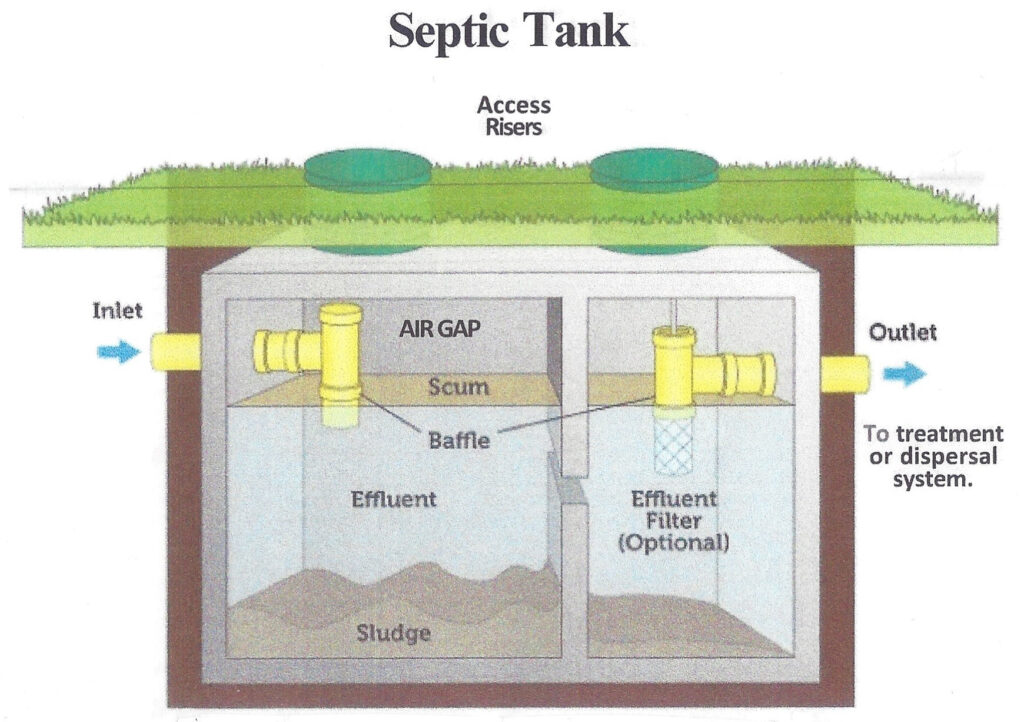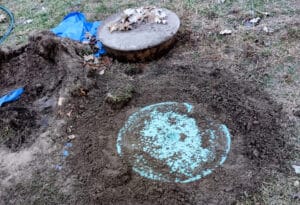FAQs
There should be roughly a nine inch air gap from the bottom of the inlet pipe to the top of the waste level.

For most households, every two to three years is adequate. For businesses such as home daycares and very large households with six or more people, they should be pumped annually.
Limited use, for example, one or two people in a home, it can be done less frequently, every three to five years.
Alarms are typically used to signify a lift pump problem. Lift pumps are used to pump just the water out into the drain field. They maintain the correct tank level. Most systems have extra space after a pump malfunction, so you have some time to get it fixed. Limit your water use until the problem can be addressed and fixed.
If you feel comfortable, you can check that the electric is working in the electrical box near the tank. Plug something (like a hairdryer or drill) into the same outlet that the pump is plugged into outside. A working appliance at the pedestal means you have a problem with the pump. Marks Sewer Service Inc. can fix this.
The maximum distance is 200 feet away; however 100 feet from the tank makes things go a lot easier.
These four inch pipes are inspection pipes and are not intended to be used for pumping. However, our hose will fit into the pipes and can be used in an emergency.
All tanks since the early eighties and some since the late seventies have manhole covers casted into the tops of the tanks, called maintenance covers. The maintenance covers are what the MPCA requires tanks to be cleaned out through. Most maintenance covers are shallow in the ground and some are flush with the grass. However, some that have never been updated can be very deep.
Most manhole covers are on the inlet end or in the middle of the tank. Manhole covers are usually buried 12 inches or less underground.

Yes, current code requires all new systems to have manhole covers flush with the ground. Existing tanks can be updated by adding a riser. A riser is an extension that fits on top of your tank, and your existing manhole cover goes back on top of the riser. It is basically a giant pipe cut to the correct length stood on end to have the manhole cover flush with the ground. We carry the riser on the truck for these instances.
It is treated with hydrated lime and turned into fertilizer.
No. The type of system depends on the type of ground.
